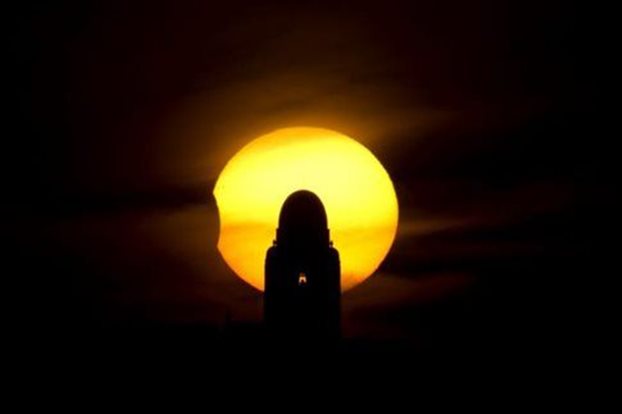Photo: archive (Reuters)
Three spectacular events will happen in short succession in the sky on Monday and Tuesday of the Holy Week.
In particular, there will be a full lunar eclipse that, however, will not be visible from Greece. Moreover, Mars will make its closest approach to Earth and, finally, there will be a full moon tonight, which is called "Easter" full moon because it is the first one after the vernal equinox.
During the eclipse, the moon will have an impressive deep red colour, as it will pass through the shadow of Earth.
What will cause this strange red colour? As explained by planetarium director Dionysus Simopoulos for "Ta Nea" newspaper, when the moon is completely in the shadow of Earth, the refraction of sunlight by our planet reaches the moon, colouring it a strange brick-coloured red, which makes the satellites look "bloody".
The date of this full moon is traditionally used for determining the date of Easter, which is therefore a moveable feast. According to both the Gregorian and the Julian calendars, this year’s Easter full moon will fall in the same week, so Orthodox Christians and Catholics will celebrate Easter on 20 April.

The full lunar eclipse will not be visible from Greece but it will be observed mainly from North and South America and the Pacific. The phenomenon will be observed on Tuesday, from 9:00 am to 12 noon, Greek time.
There will be three more lunar eclipses, also "bloody", on 8 October 2014 and on 4 April and 28 September 2015, which will form a "quartet" of eclipses. This happens from time to time and some superstitious people associate it with disasters and misfortunes.
Furthermore, a few hours before the eclipse, at about 4:00 pm Greek time on Monday afternoon, Mars will be only 92.4 million km away from Earth (compared to 150 million km, which is the distance from Earth to the sun), as a result of which, on Monday evening, it will look as bright as Sirius, which is the brightest star in the sky.
This will be the closest approach of the red planet to Earth since 2008, although in 2003 Mars was even closer to our planet, only 55.7 million km away from it, according to Space.com.
For fans of astronomy, at 9:00 pm Greek time on Monday, shortly before the eclipse, the moon will pass three degrees south of the bright Mars, and the two heavenly bodies will form a beautiful light "duet", if the temporary clouds allow observing it, of course.
On 8 April, people on Earth saw another interesting phenomenon, namely Mars, Earth and the sun arranged in a line, which happens every 26 months.